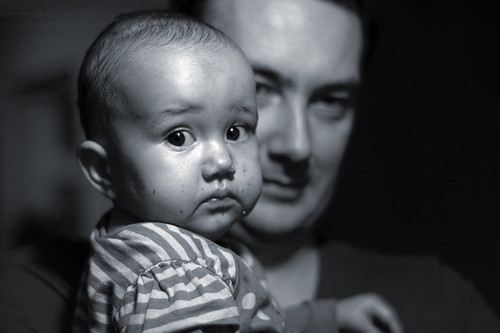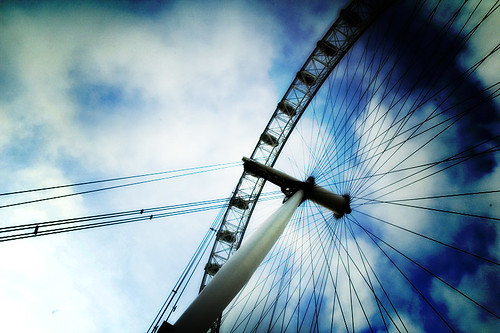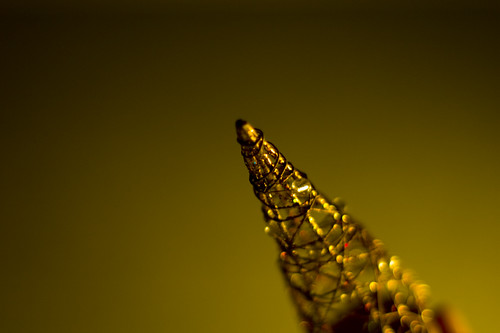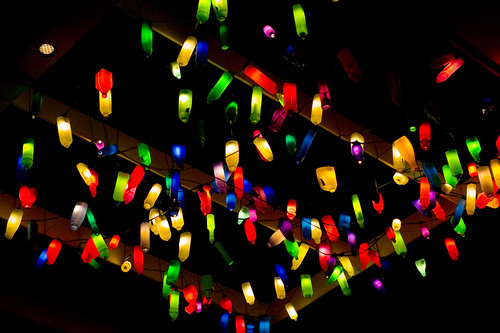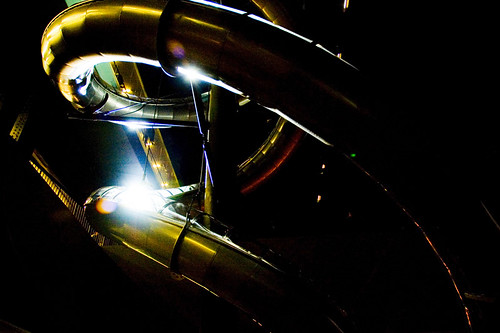I’d like to take a moment to talk about the practical applications of Art, just to establish that Art is relevant to everyone, and not some load of effete rubbish for an intellectual few.
Architecture isn’t something that immediately springs to mind when someone says “Art”, yet it’s probably the form or art that most of us have most daily interaction with, since it’s the art form that creates the spaces we live in.
But on the other hand, it’s also the one to which it is hardest to apply the working definition I opted for in my last entry – that Art requires that the creator be expressing a thought they have had about the world. It’s not impossible. Jump Studios for example, created a fascinating space for the new Red Bull office in London this year. I’m not sure how it would feel to work there, done out as it is in heavy blues and stark whites, but it’s certainly interesting. It’s other major unusual feature is that the building incorporates slides as a way of moving between floors in the office.
Which leads me, of course, to “Test Site” Carsten Höller’s current exhibition at the Tate Modern. Holler’s body of work combines architecture, sculpture and other disciplines to ask questions about the way we interact with the space around us. It’s a notion that’s increasingly relevant today, as we start to move from an industrial economy to an information economy. Suddenly, we no longer need to have our use of space dictated by the practicalities of using machines. There are exceptions as, for example, major internet companies are forced to locate their server farms in places where they can obtain the bandwidth and electrical supply they need, but for the most part, we are increasingly free of the need to work in warehouses, or even dedicated office space.
And so it becomes increasingly relevant to ask how we can make use of space in such a manner as to enhance our daily lives, not just from a functional point of view, but also as a means to create moments of pleasure in our day to day life. This is the question currently facing artists and architects, and having been to experience “Test Site” myself, I have to say, Höller and Jump are probably on to something.
